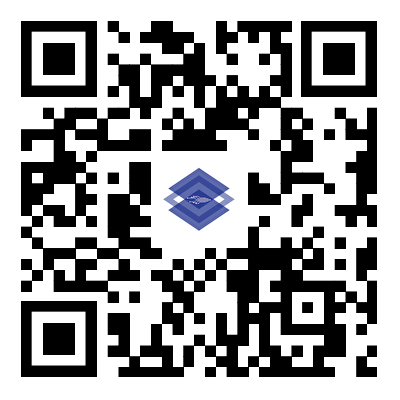- English
- Español
- Português
- русский
- Français
- 日本語
- Deutsch
- tiếng Việt
- Italiano
- Nederlands
- ภาษาไทย
- Polski
- 한국어
- Svenska
- magyar
- Malay
- বাংলা ভাষার
- Dansk
- Suomi
- हिन्दी
- Pilipino
- Türkçe
- Gaeilge
- العربية
- Indonesia
- Norsk
- تمل
- český
- ελληνικά
- український
- Javanese
- فارسی
- தமிழ்
- తెలుగు
- नेपाली
- Burmese
- български
- ລາວ
- Latine
- Қазақша
- Euskal
- Azərbaycan
- Slovenský jazyk
- Македонски
- Lietuvos
- Eesti Keel
- Română
- Slovenski
- मराठी
- Srpski језик
How to implement ultra-high-speed data transmission technology in PCBA processing
2025-04-02
In modern electronic products, ultra-high-speed data transmission technology has become one of the key factors to improve performance. In PCBA (Printed Circuit Board Assembly) processing, the application of these technologies can significantly improve the data processing capabilities and response speed of electronic devices. This article will explore how to implement ultra-high-speed data transmission technology in PCBA processing to help electronic products operate efficiently.

I. Overview of ultra-high-speed data transmission technology
1. Definition of ultra-high-speed data transmission
Ultra-high-speed data transmission technology refers to the technology of transmitting a large amount of data in a short period of time, usually requiring a frequency of several hundred megahertz (MHz) or higher. These technologies include high-speed serial data transmission, differential signal transmission, and high-frequency and high-speed interface protocols, which are used to ensure fast and reliable transmission of data in electronic devices.
2. Technical advantages
Ultra-high-speed data transmission technology can significantly improve the data processing capabilities and communication speed of electronic devices. This is especially important for applications that require real-time data processing, such as high-frequency trading, high-definition video processing, and large-scale data analysis. By achieving ultra-high-speed data transmission, system performance can be optimized and user experience can be improved.
II. Strategies for achieving ultra-high-speed data transmission in PCBA processing
1. High-speed signal design
1.1 Differential signal transmission
In PCBA processing, the use of differential signal transmission technology can effectively reduce signal interference and crosstalk. Differential signals transmit data through two complementary signal lines. This design can improve the signal's anti-interference ability and ensure the stability of data transmission. The design of differential pairs should be as short as possible and ensure that the signal lines are evenly spaced to reduce signal distortion.
1.2 High-speed PCB layout
Optimizing PCB layout is the key to achieving ultra-high-speed data transmission. When designing, it is necessary to pay attention to the layout of high-speed signal lines, minimize the length of the signal path, and avoid signal attenuation caused by long-distance transmission. In addition, high-speed signal lines should try to avoid crossing with other signal lines, and appropriate ground layer isolation should be performed to reduce electromagnetic interference.
2. Use high-frequency materials
2.1 High-speed PCB materials
Choosing suitable high-speed PCB materials is another important factor in achieving ultra-high-speed data transmission. High-frequency PCB materials have lower dielectric constants and loss factors, which can effectively reduce signal loss and delay in signal transmission. Common high-speed PCB materials include FR-4, high-speed ceramic substrates, and polytetrafluoroethylene (PTFE) substrates.
2.2 Material performance optimization
When selecting materials, it is necessary to consider their adaptability to high-frequency signals. High-quality materials can provide better signal integrity and stability, and reduce signal attenuation and reflection. The optimization of material performance can be achieved through experimental verification and simulation analysis to ensure the quality of data transmission in practical applications.
3. High-speed interface and protocol
3.1 Use advanced interface
In PCBA processing, advanced high-speed interfaces and protocols such as PCIe (Peripheral Component Interconnect Express), USB 3.0/3.1, Thunderbolt, etc. can be used. These interfaces provide higher data transmission rates and bandwidths to meet the needs of high-speed data transmission. Choosing appropriate interfaces and protocols can improve data transmission efficiency and enhance device compatibility.
3.2 Protocol optimization
Optimizing data transmission protocols is also an important means to increase transmission speed. Protocol optimization includes adjusting the size of data packets, reducing delays and overhead in data transmission, etc., to improve overall data transmission efficiency. Through the reasonable configuration and optimization of the protocol, the data transmission performance and stability can be further improved.
III. Challenges faced by ultra-high-speed data transmission technology
1. Signal integrity
Signal integrity is an important challenge in high-speed signal transmission. Problems such as signal distortion, crosstalk and reflection will affect the accurate transmission of data. To ensure signal integrity, it is necessary to accurately design the signal line layout, select appropriate materials, and conduct rigorous testing and verification.
2. Thermal management
Ultra-high-speed data transmission is usually accompanied by high power consumption and heat generation. Thermal management measures need to take into account the heat dissipation design of the circuit board to prevent overheating from affecting the performance and stability of the device. Appropriate heat dissipation solutions include heat sinks, thermal conductive materials and fans.
3. Cost control
The implementation of ultra-high-speed data transmission technology may increase production costs, including the cost of high-frequency materials, advanced interfaces and optimized designs. Enterprises need to find a balance between performance improvement and cost control to ensure the economy and feasibility of technology implementation.
Conclusion
The implementation of ultra-high-speed data transmission technology in PCBA processing can significantly improve the performance and efficiency of electronic products. Fast and stable data transmission can be achieved by adopting strategies such as high-speed signal design, high-frequency materials, advanced interfaces and protocols. However, these technologies also face challenges such as signal integrity, thermal management and cost control. Through reasonable design and optimization, companies can ensure the economic and sustainable production while improving product performance.
-
Delivery Service






-
Payment Options









